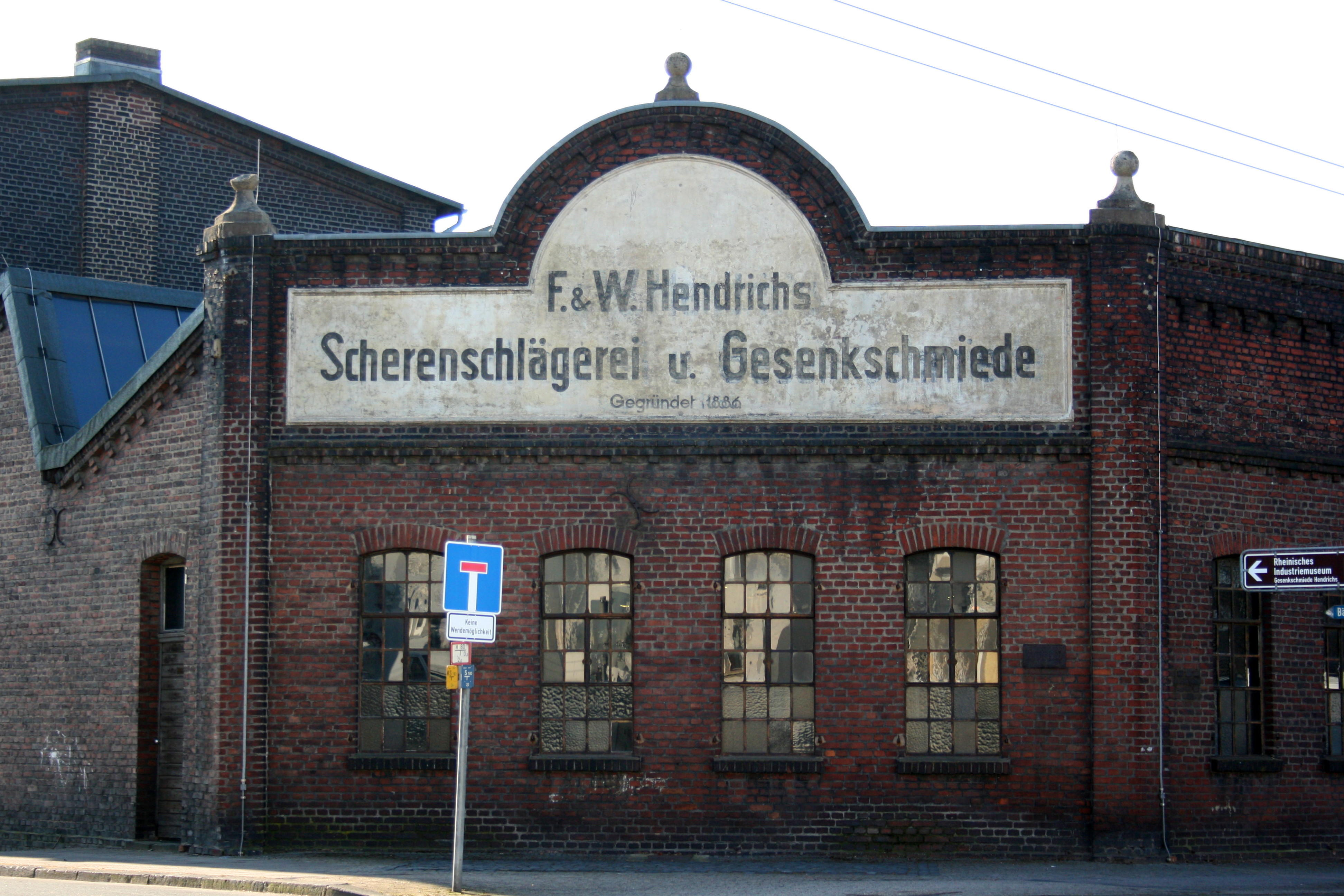Hendrich's Drop Forge on:
[Wikipedia]
[Google]
[Amazon]
 The Hendrich's Drop Forge part of the LVR Industriemuseum is a
The Hendrich's Drop Forge part of the LVR Industriemuseum is a
Official Website
Industry museums in Germany Steel industry of Germany European Route of Industrial Heritage Anchor Points Solingen {{Germany-museum-stub
 The Hendrich's Drop Forge part of the LVR Industriemuseum is a
The Hendrich's Drop Forge part of the LVR Industriemuseum is a museum
A museum ( ; plural museums or, rarely, musea) is a building or institution that cares for and displays a collection of artifacts and other objects of artistic, cultural, historical
History (derived ) is the systematic study and th ...
in Solingen (), a city in North Rhine-Westphalia
North Rhine-Westphalia (german: Nordrhein-Westfalen, ; li, Noordrien-Wesfale ; nds, Noordrhien-Westfalen; ksh, Noodrhing-Wäßßfaale), commonly shortened to NRW (), is a state (''Land'') in Western Germany. With more than 18 million inhab ...
, Germany
Germany, officially the Federal Republic of Germany (FRG),, is a country in Central Europe. It is the most populous member state of the European Union. Germany lies between the Baltic and North Sea to the north and the Alps to the sou ...
. It is located on the northern edge of the region called Bergisches Land
The Bergisches Land (, '' Berg Country'') is a low mountain range region within the state of North Rhine-Westphalia, Germany, east of Rhine river, south of the Ruhr. The landscape is shaped by woods, meadows, rivers and creeks and contains ov ...
, south of the Ruhr.
The museum is an Anchor point on the European Route of Industrial Heritage
The European Route of Industrial Heritage (ERIH) is a tourist route of the most important industrial heritage sites in Europe. This is a tourism industry information initiative to present a network of industrial heritage sites across Europe. The ...
.
Context
The Hendrichs family firm was founded in 1886 during an economic boom inSolingen
Solingen (; li, Solich) is a city in North Rhine-Westphalia, Germany. It is located some 25 km east of Düsseldorf along the northern edge of the region called Bergisches Land, south of the Ruhr area, and, with a 2009 population of 161,3 ...
. Solingen in the “Bergisches Land
The Bergisches Land (, '' Berg Country'') is a low mountain range region within the state of North Rhine-Westphalia, Germany, east of Rhine river, south of the Ruhr. The landscape is shaped by woods, meadows, rivers and creeks and contains ov ...
” had turned out scissors, knives and weapon
A weapon, arm or armament is any implement or device that can be used to deter, threaten, inflict physical damage, harm, or kill. Weapons are used to increase the efficacy and efficiency of activities such as hunting, crime, law enforcement, ...
s since the Middle Ages
In the history of Europe, the Middle Ages or medieval period lasted approximately from the late 5th to the late 15th centuries, similar to the post-classical period of global history. It began with the fall of the Western Roman Empire ...
. External conditions were ideal as there were limitless supplies of iron ore
Iron ores are rocks and minerals from which metallic iron can be economically extracted. The ores are usually rich in iron oxides and vary in color from dark grey, bright yellow, or deep purple to rusty red. The iron is usually found in the ...
from the hills while the surrounding forests provided enough fuel to keep the fires burning. The River Wupper and its many tributaries provided the necessary hydraulic power for all the forging
Forging is a manufacturing process involving the shaping of metal using localized compressive forces. The blows are delivered with a hammer (often a power hammer) or a die. Forging is often classified according to the temperature at whi ...
and grinding operations. Solingen's drop forges caused the town to become the world's largest producer of scissors.
History
The Hendrichs Drop Forge inSolingen
Solingen (; li, Solich) is a city in North Rhine-Westphalia, Germany. It is located some 25 km east of Düsseldorf along the northern edge of the region called Bergisches Land, south of the Ruhr area, and, with a 2009 population of 161,3 ...
is around 120 years old and it continued as a commercial concern producing scissors
Scissors are hand-operated shearing tools. A pair of scissors consists of a pair of metal blades pivoted so that the sharpened edges slide against each other when the handles (bows) opposite to the pivot are closed. Scissors are used for cutt ...
until 1986. The LVR Industrial Museum
The Rheinisches Industriemuseum (lit. Rhineland Museum of the Industry) is a decentralized museum with six locations in Rhineland, western Germany. The locations are:
*Oberhausen: the main site at the old Zinkfabrik Altenberg (zinc factory), near ...
took over the complete site including the buildings, technical equipment and nine members of staff.
Process
The heavy, block-like forging dies were responsible for this: precision tools made of top quality steel into which the hollow outline of a scissor blade had been carved. The Hendrichs factory contained 33 drop hammers, which made it the largest drop forge in the area. The hammer only needed to be dropped a maximum of four times to forge a scissor blade from a narrow slab of steel.References
;Notes ;FootnotesExternal links
Official Website
Industry museums in Germany Steel industry of Germany European Route of Industrial Heritage Anchor Points Solingen {{Germany-museum-stub